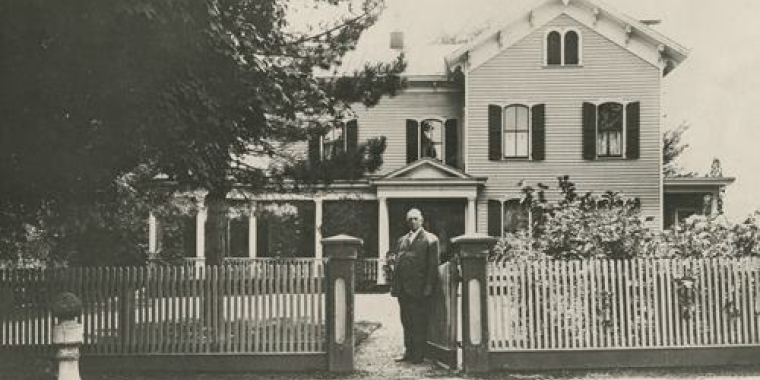
Senator Murphy announces Croton’s Acker House recommended for registers of historical places
March 23, 2017
-
ISSUE:
- croton
- Historic Preservation
- national register of historic places
- state register of historic places
- Underhill-Acker House

CROTON-ON-HUDSON, NY – During the early part of the last century, Dr. Thomas Jefferson (T.J.) Acker saved many lives at his home and medical office at 4 Hamilton Avenue in Croton-on-Hudson. It seems fitting that his opulent, historic home now has a chance to be saved for everyone in the community to visit and enjoy. Senator Terrence Murphy, a fellow physician, is pleased to announce that the Underhill-Acker home has been recommended for inclusion in the State and National Registers of Historic Places.
State and National Registers listing can assist property owners in revitalizing buildings, making them eligible for various public preservation programs and services, such as matching state grants and state and federal historic rehabilitation tax credits.
“The Underhill-Acker House is an important historical and architectural resource,” said Senator Murphy. “It was associated with the Underhill family, who were instrumental in building local commerce. It was then owned by Dr. T.J. Acker during a period when he made his most significant contributions to medicine. The house captures the design of a bygone era and serves as a reminder of the important local events that have helped shape Croton’s history.”
“The house is valued as one of the few pristine examples of a unique, romantic style of architecture,” said Croton-on-Hudson Mayor Dr. Greg Schmidt. “I am delighted at the prospect of the Underhill-Acker House and our village being honored with this important designation.”
The home’s legacy parallels Croton-on-the Hudson’s own history, dating back to when the area was known as Croton Landing and it was an active port for shipping. Although census records in the Nineteenth Century were spotty, it appears the house was erected in 1873 for William and Phebe Sands. Following the death of her husband, Phebe Sands sold the home to Robert and Charlotte Underhill in 1876. The Underhill family became prominent figures in the community, first owning flour mills and later a conglomerate of prosperous brickyards located along the banks of the Hudson River. Dr. Acker bought the home in 1886. Following his death in 1914, his wife Frederica inherited the house, where she lived with her daughter, Ella May and her son-in-law, William Burdick. Ella May eventually inherited the house, donating it to the Methodist Episcopal Church. In turn, the church sold the house to Jack and Eleanor Cooper in 1964. Ten years later, the current owners, Marc and Lauren Shenfield, purchased the home from the Coopers.
The Underhill-Acker House remains an outstanding representation of nineteenth-century domestic architecture executed in Italianate style. The two and one-half story wood-frame, clapboarded dwelling was built on a T-shaped plan above a brick foundation and was oriented to provide a picturesque view of Croton Point and the Hudson River. The house exhibits physical attributes of the Italianate style with a cross-gabled roof, terra-cotta chimney pots, projecting bay window, and other decorative devices, such as a prominent bracketed cornice and molded segmental window surrounds. The first notable alteration to the home was made by Dr. Acker, who replaced the original front porch with a larger wraparound verandah of neoclassical inspiration. Accommodations were also made for the installation of a discreet one-story addition to the home that served as his medical office. A gold plated sign outside the house still bears his name. The rest of the building retains the bulk of its original 1873 interior features, including an intact floor plan, struck plaster cornices, marble and marbleized slate mantelpieces, grain-painted paneled wood doors, and hardware, in addition to a largely intact, accessible, at-grade basement kitchen and dumbwaiter system.
The State and National Registers are the official lists of buildings, structures, districts, landscapes, objects and sites significant in the history, architecture, archeology and culture of New York State and the nation. There are more than 120,000 historic buildings, structures and sites throughout the state listed on the National Register of Historic Places, individually or as components of historic districts. Property owners, municipalities and organizations from communities throughout the state sponsored the nominations.
Once the recommendations are approved by the state historic preservation officer, the properties are listed on the New York State Register of Historic Places and then nominated to the National Register of Historic Places, where they are reviewed and, once approved, entered on the National Register.



